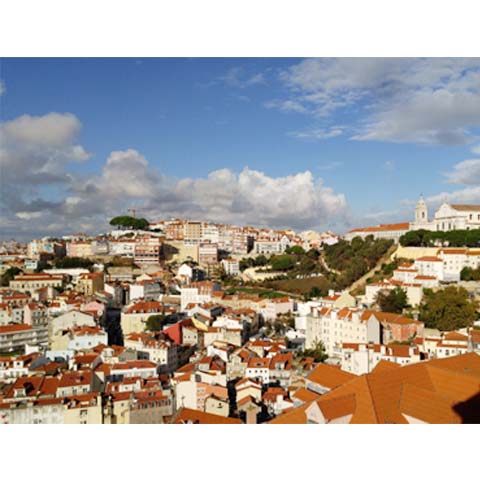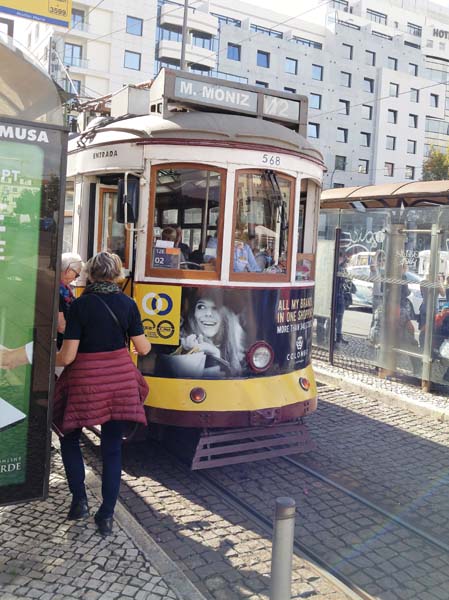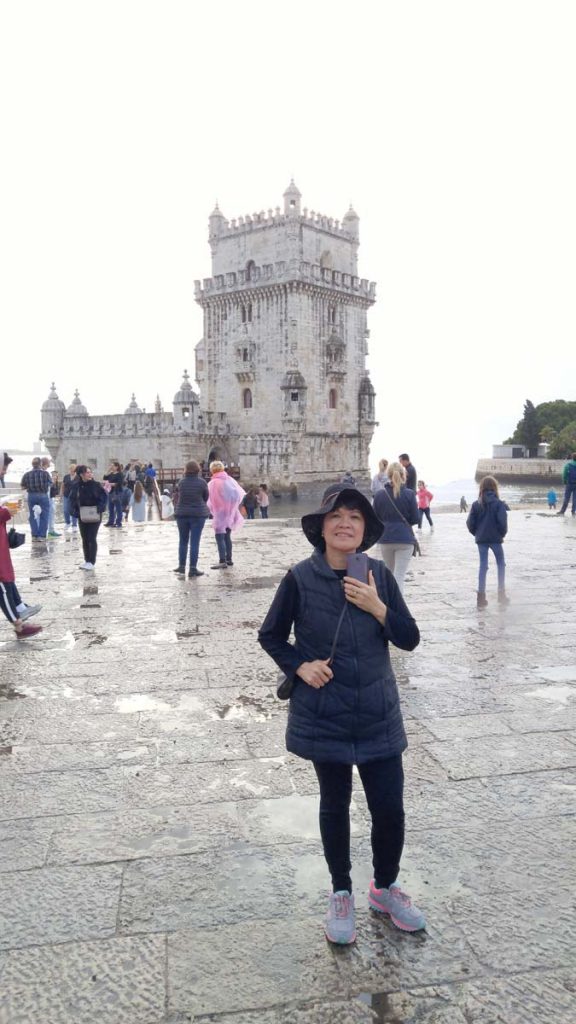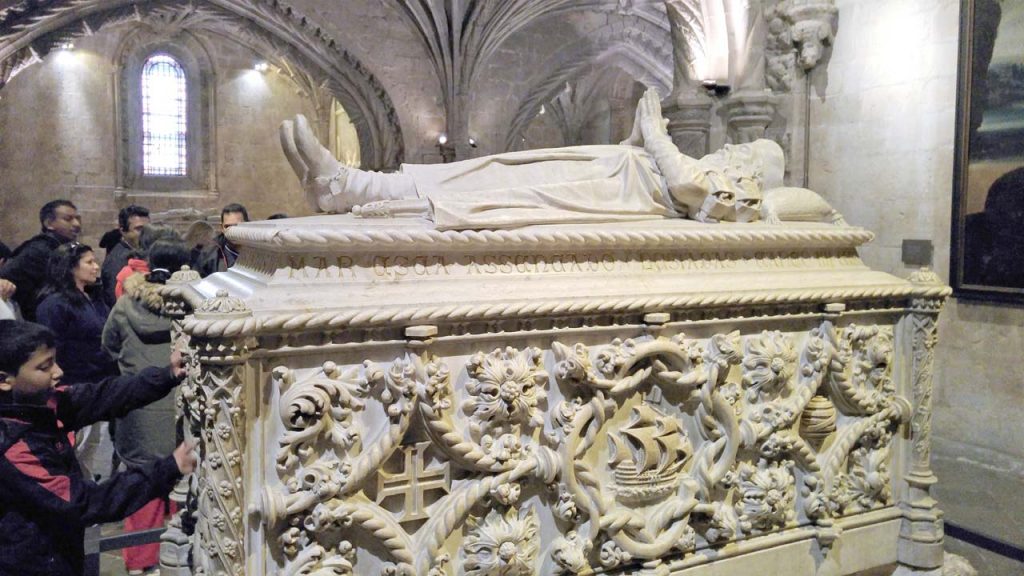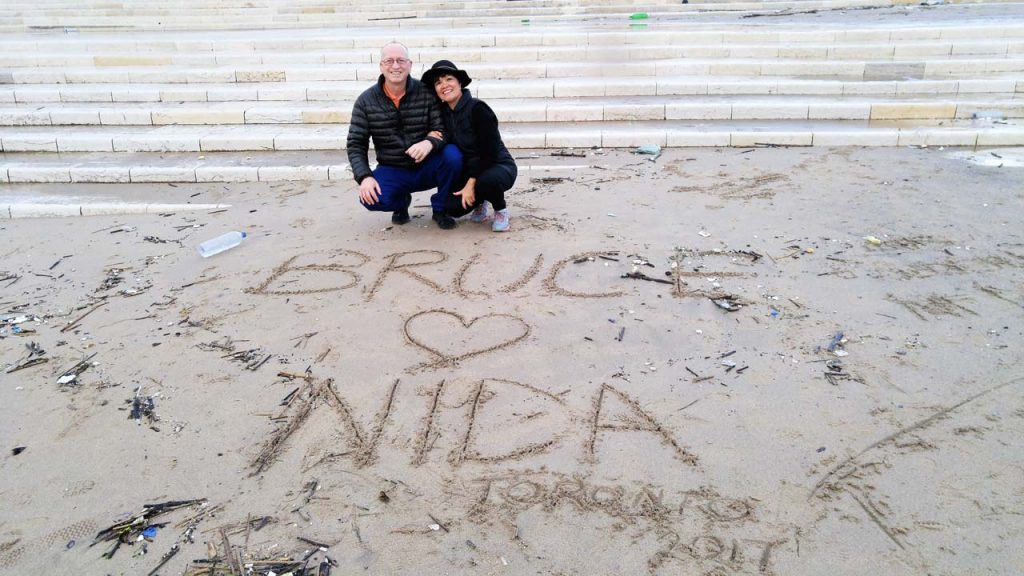Lisbon’s historical ties with Macau pays off with influx of Chinese tourists to the European country.
LISBON, Portugal – The Belem Tower stands guard along the north bank of the Tagus River, part of an elaborate 16th-century fortification plan to protect the city. At four floors high, it would have been impressive when it was built in 1519 and done up in the local Manueline style of architecture. It is from here that many Portuguese explorers embarked on voyages that took them as far away as China in search of the Middle Kingdom’s fabled riches.
My wife Nida and I took time to write our names in the sand in the shadow of the Tower, where we met a young Chinese couple, tourists like ourselves taking selfies and soaking up the history of continental Europe’s westernmost capital city. They were kind enough to take our photo by our sandy artwork.
We had just come from the nearby Jeronimos Monastery, where the tomb of Vasco da Gama has pride of place inside its vast interior. Da Gama (1469-1524) was the Portuguese explorer largely responsible for finding sea routes to Asia around the cape of Africa, launching a golden age of exploration and trade links with China through Portugal’s colony of Macau.
The monastery is built of limestone and was completed in 1601. It is one of many attractions in Belem (Portuguese for Bethlehem), a half-hour streetcar ride away from the center of old Lisbon, where all the roads are cobblestone and some streets are so narrow I could stretch out my arms and, with the palms of my hands, touch the walls of buildings on either side.
And the hills! Lisbon is sometimes called “the city of seven hills” for a reason. The old trams, which are tourist attractions themselves, are a godsend if you are hauling any kind of luggage, because even the sidewalks are covered in small pieces of stone done in mosaic patterns. Lovely to look at but hard on the luggage wheels (or high heels).
Our hotel the first night we stayed in Lisbon was called The Keep. It is near the Sao Jorge castle, an old fortification dating back to medieval times and perched high on a hill overlooking the historic center of the city. The view would have given defenders of the castle a clear view of any invaders coming in by land or by way of the Tagus River.
And what a view it is.
The Keep was named for a small room at the top of a winding staircase. In medieval times, this room was a refuge of last resort during an invasion. From this vantage point, we could see clear across the old city, whose buildings’ roofs are covered mostly in red clay tile.
Walking through the old Alfama district of Lisbon, not far from the castle, we could appreciate the need to be in good shape: There were plenty of stairs and hills to climb. We passed by some lovely old churches and restaurants, some of them not much more than holes in the wall.
Chinese connection
Aside from all the historical places, there is plenty of shopping and dining in Lisbon, including a Ten Best list of Chinese restaurants recommended by Trip Advisor. The Chinese community in Lisbon is small, perhaps 15,000 in a city of nearly 2.7 million. But it is one of the continent’s oldest, owing to close ties between China and Portugal when the latter was a naval power. Many came from the former Portuguese colony of Macau, and some may be descendants of Chinese who were brought over as slaves via Spain nearly 500 years ago.
Macau is, in fact, one of the reasons for the surge in tourism from China. Traders from Portugal settled the area in the 1550s and eventually leased the territory from China during the Ming Dynasty (1368-1644) for use of its port. Eventually, Macau became a Portuguese colony and remained so until it was returned to Chinese sovereignty in 1999.
Those long-time ties mean Portugal is well known among the Chinese, making it a natural fit for tourists. At a Portuguese Association of Travel and Tourism Agencies congress held in Macau in November 2017, Portugal’s secretary of state for tourism, Ana Mendes Godinho, said the country aims to be China’s gateway into continental Europe. This opinion, reported in the Macau Daily Times, is shared by Macau’s Secretary for Social Affairs and Culture, Alexis Tam, who told the same congress he would like to see increased tourism between the two countries.
With direct flights between Lisbon and Beijing launched last year, Chinese tourism is bound to grow. It is estimated that as many as one million Chinese a year will visit the European country within the next few years, up from about 200,000 today, according to The Portugal News Online.
Today, the Chinese are also well represented in the country’s commercial scene, particularly in Lisbon. We discovered an underground shopping concourse inside the entrance to the Martim Moniz subway station, where most of the merchants were Chinese – in fact the area around Martim Moniz (named for a medieval knight) is a rather informal Chinatown. Beyond that area, there are other stores run by Chinese residents, including a large grocery store selling traditional food, where we stopped to buy some bottled water on one of our walks.
Pedestrian delights
Tourists, whether from China or Canada, will find Lisbon has plenty of familiar chain stores and restaurants, including the ever-present Starbucks and McDonald’s. We found some familiar shops on a pedestrian mall along Rua Augusta, just a short walk west and south from Praca da Figueira (Square of the Fig Tree). Just northeast of the Rossio railway station and behind the Teatro D. Maria II is another pedestrian precinct with plenty of independent restaurants and bars, where, at 9 p.m., the party is just beginning.
Much of our time in Lisbon was spent walking, because this is the best way to experience the city, which dates back at least 2,700 years to ancient Roman times. It is the best way to soak up the architecture of the buildings both quaint and grand, many of them covered with ceramic tiles in multiple colors and patterns. (The city even has a museum dedicated to ceramic tiles.)
But when we needed to use transit, Lisbon’s efficient Metro underground subway system took us where we needed to go, including the airport. And the old-world trams with the narrow-gauge track took us everywhere in between. We found a day pass worked well for us and the prices were reasonable.
Being Canadian, I found the prices reasonable for a meal. I bought a fresh fruit salad at Varn, a bakery-cum-grocery store off Praca da Figueira, for 1.20 euros (P77), and beer for one euro (about P64).
The local beers, Sagres and Super Bock, were almost as cheap as pop, and certainly cheaper than fresh-squeezed orange juice. At another restaurant, A Padaria Portuguesa, along the waterfront near the ferry terminal, my wife and I ordered hamburgers with drinks. The meal for the both of us, including chips and beverage, was less than 12 euros (P766): orange juice was 1.80 euros (P115) and beer was 1.40 euros (P90).
A guy could get used to that.
